Bavarian Baroque I: Ratisbon
Oct. 17th, 2021 07:37 pmI was travelling these last two weeks, and collected enough pictures for two pic spams, due to the charm of the places I was staying at. First comes Ratisbon, aka Regensburg as we say in German. Home of gorgeous buildings - like my hometown, Bamberg, the entire city centre has been declared world heritage by the UNESCO -, awful bishops, awesome scientists (Kepler and Albertus Magnus, take your bow), and as a long term result of the 30 Years War the so called "Perpetual Diet", which has nothing to do with food and everything with the need for a kind of parliament to meet so lots of envoys can bitch about being bored to be posted here and write reports about it. It's been founded by Marcus Aurelius (which doesn't make it Germany's oldest city - that's Trier - , but certainly one of the older ones), and boasts of delicious chocolate made in one of German's first coffee houses (also the long term result of all those envoys having to be there). And here's why it's worth a visit:
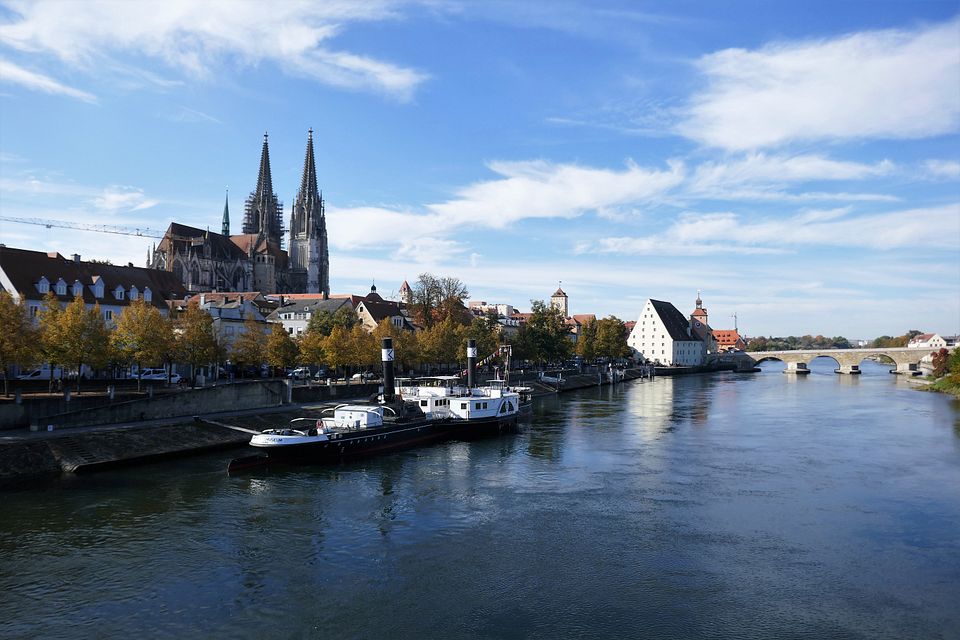
First, here's an overview:
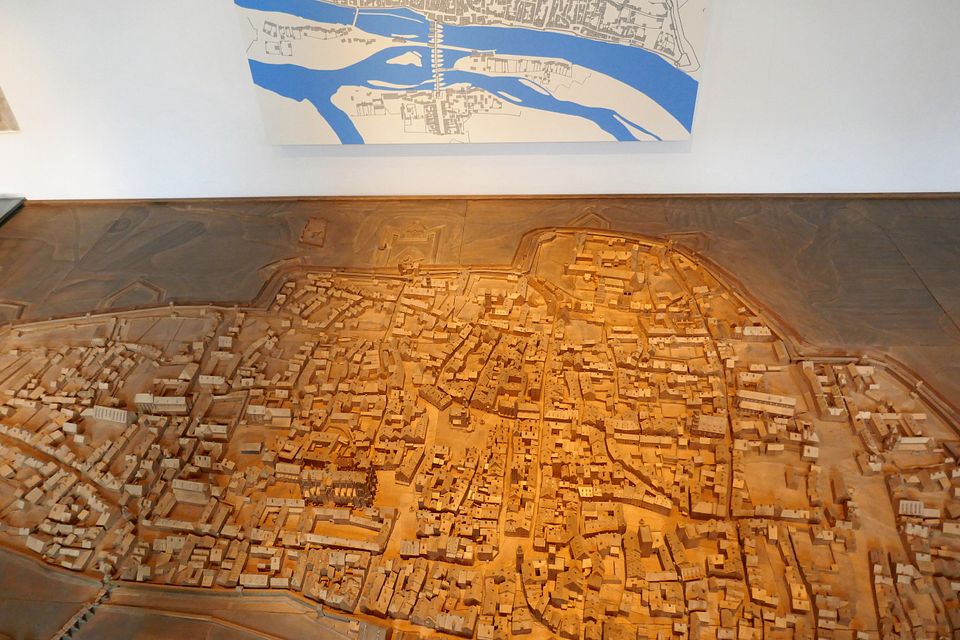
Every now and then, you come across some Roman relics. Like the Porta Praetoriana:
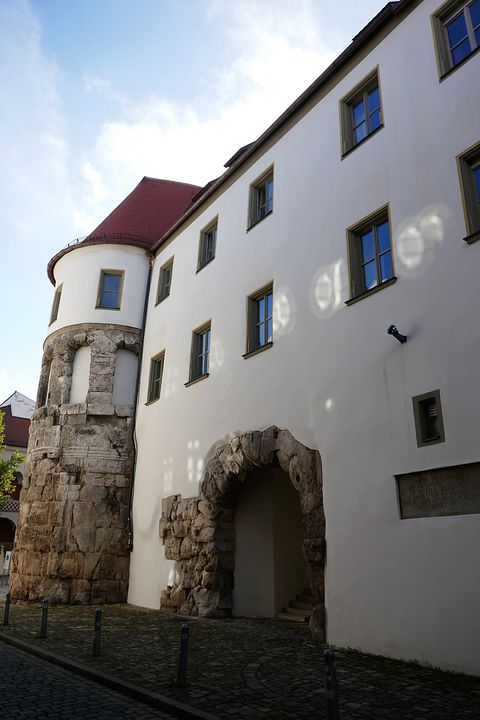
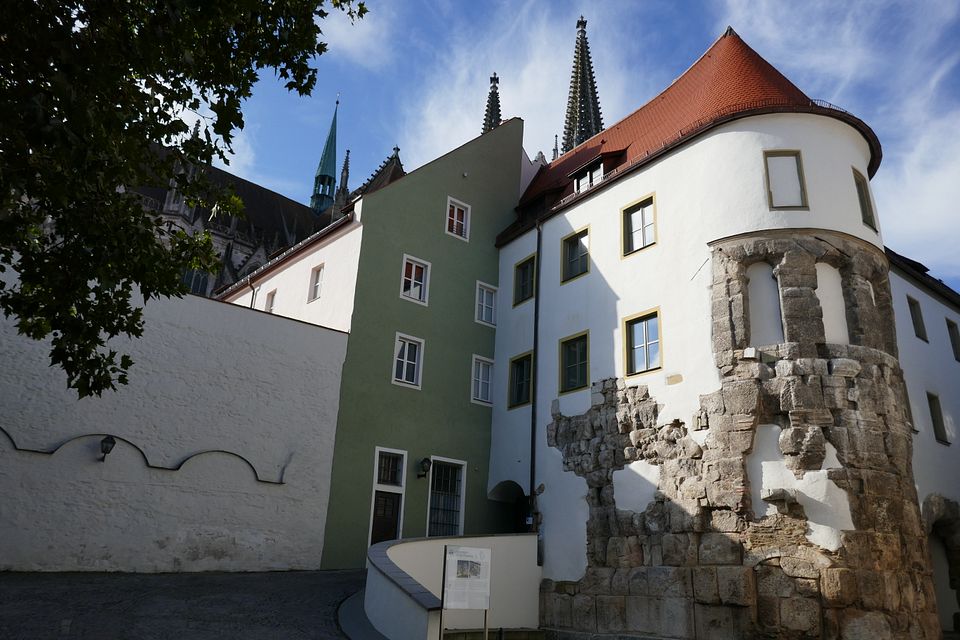
Walking through the streets of Ratisbon is like this:
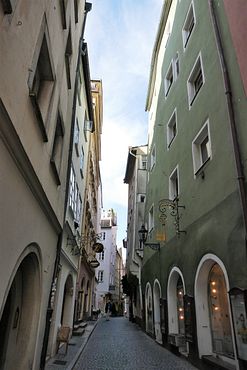

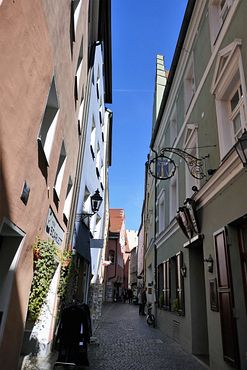

And the good citizens of Ratisbon for most of its history were very wealthy indeed:

One Ratisbon trademark is the stone bridge, the "Steinerne Brücke" leading into the city. On it, there's a small statue of a man gazing at the city centre, or to be more specific, in the direction of the cathedral. Local legend has it that the master mason of the Cathedral and the one from the bridge had a bet as to which of them would finish first, and the bridge builder lost, which is why he's gazing in frustration.
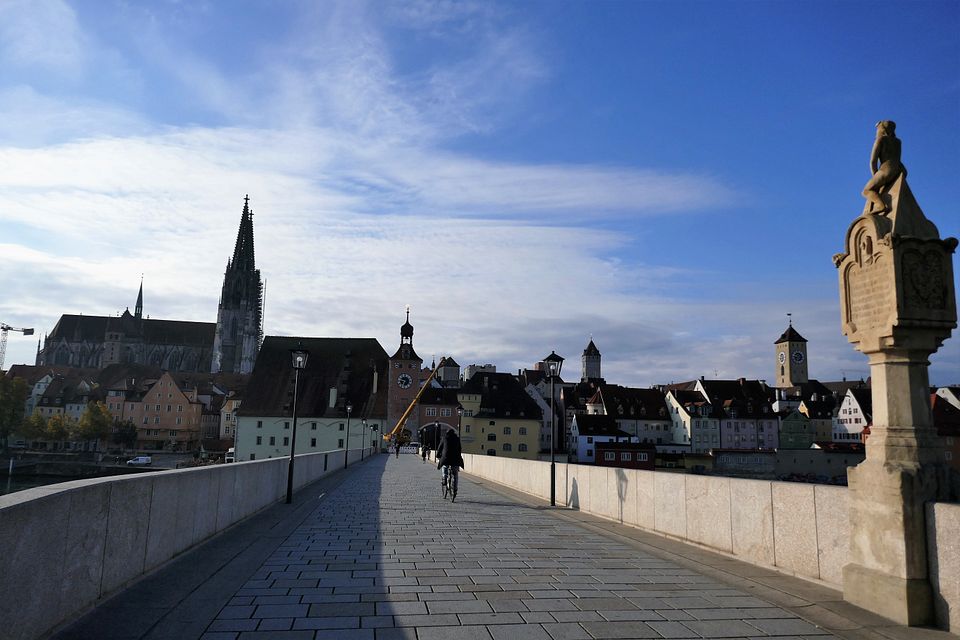
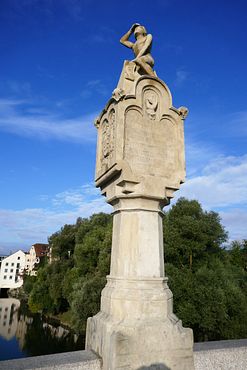
This statue is a modern copy, though, since the original, well, I found it in a museum, and:
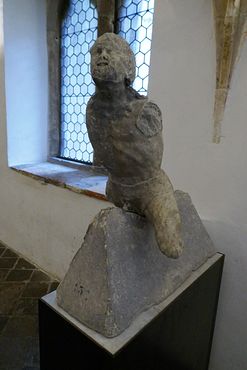
Back to the bridge. This is the old gate to it from the city side:

Have the bridge from both sides:
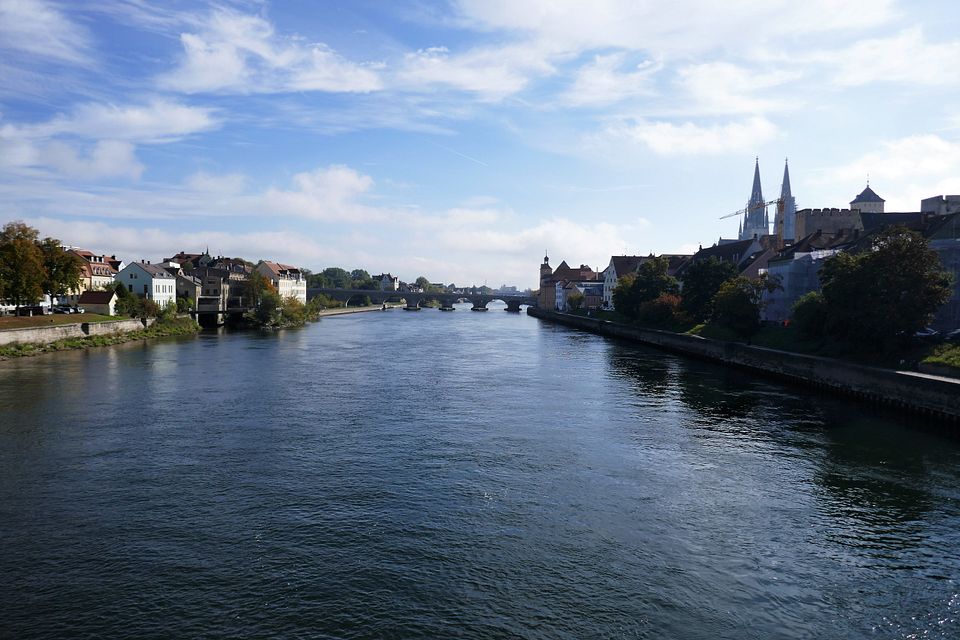
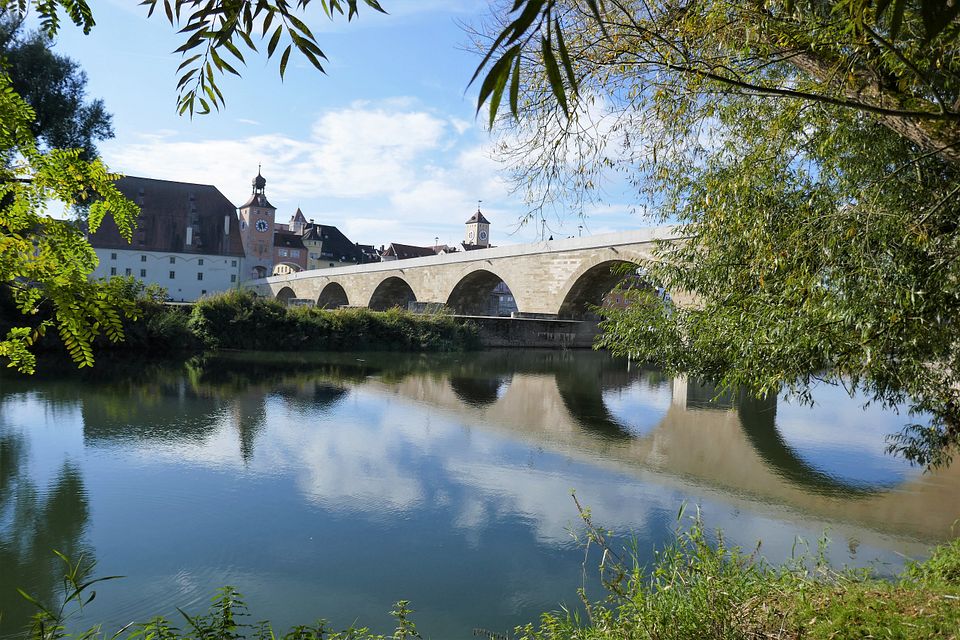
St. James, aka "The Scots' Church", actually was founded by Irish monks, whom the good citizens from Ratisbon could not tell apart from Scots, hence the name. The portal is one of the few remaining Romanic portals not baroquified later. Ca. from 1080 AD.
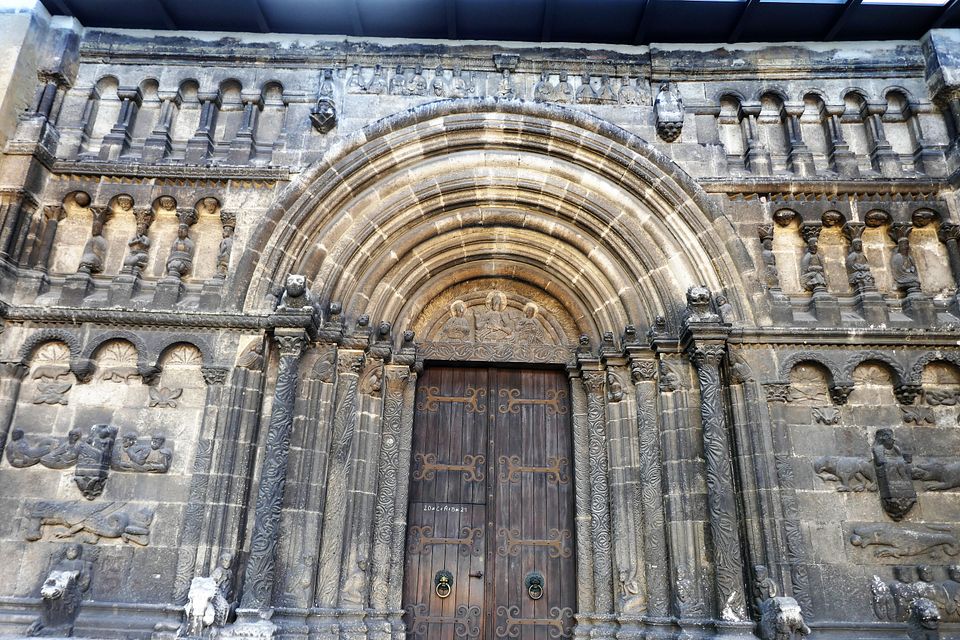
Have some details:
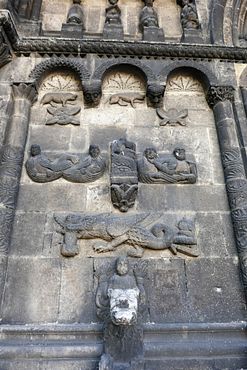

One of the reasons why Ratisbon was picked to host the Perpetual Diet was that it had Protestant churches as well as Catholic ones. This is one of them, from which one supposedly has a splendid view over the city. Alas, though, it was closed. I'm taking this personally. Towers are made for me to climb on.
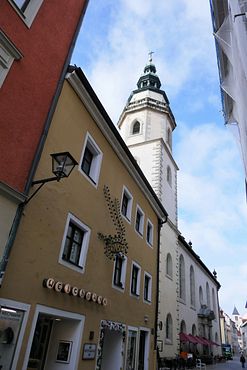
Next to the church, also locked up and only to be glmpsed at from the street, are the tombs of the Protestant envoys buried there. From which you can see that for all their bitching about being bored, their jobs didn't pay badly, for:
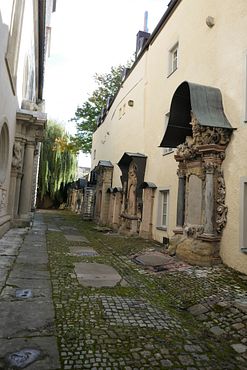
It is, of course, located at the Street of Envoys. BTW, it amused me that the most opulent envoy residence was the Saxonian one, because of course it was.
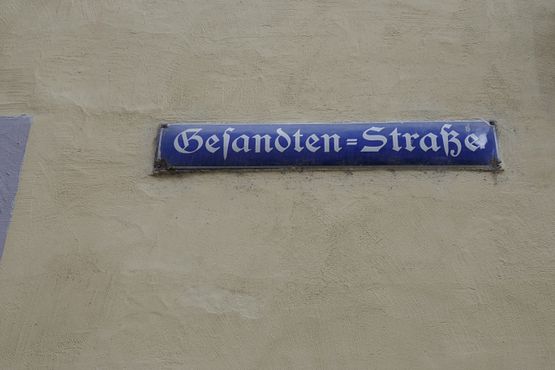
Now, Ratisbon is home to one of one of Germany's more famous noble families, the Princes of Thurn and Taxis. They started out as very successful burgher entrepeneurs in the Renaissance who ran a posting service and rapidly beat the competition (one way or another, she said in a sinister voice) until the Emperor gave them a virtual monopoly on the mail in the HRE and ennobled them, which made the Thurn and Taxis family very rich indeed. They were still loaded when Regensburg became host city of the Perpetual Diet, and the Emperor needed a representative there who had the cash not to take bribes of all the other envoys. Which is how the T & T family and all their money transfered from Frankfurt to Regensburg. They first rented, then bought a local monestary, St. Emmeran, and transformed into their palace. Currently, the senior head of the family is one of the more obnoxious women to grace the Earth; she started out as a punk girl in the 1970s, married the Duke and became ultra Catholic, of the type for whom the phrase "more Catholic than the Pope" is coined. (Especially the current Pope; the former archbishop of Ratisbon, of whom she's a big supporter, is one of the anti-Francis fundamentalist ringleaders.) Also known to defend physical abuse ("kids need discipline"). Back to the buildings. This is the main palace. (Still private property, hence there are only some spots where you're allowed to take pictures.)
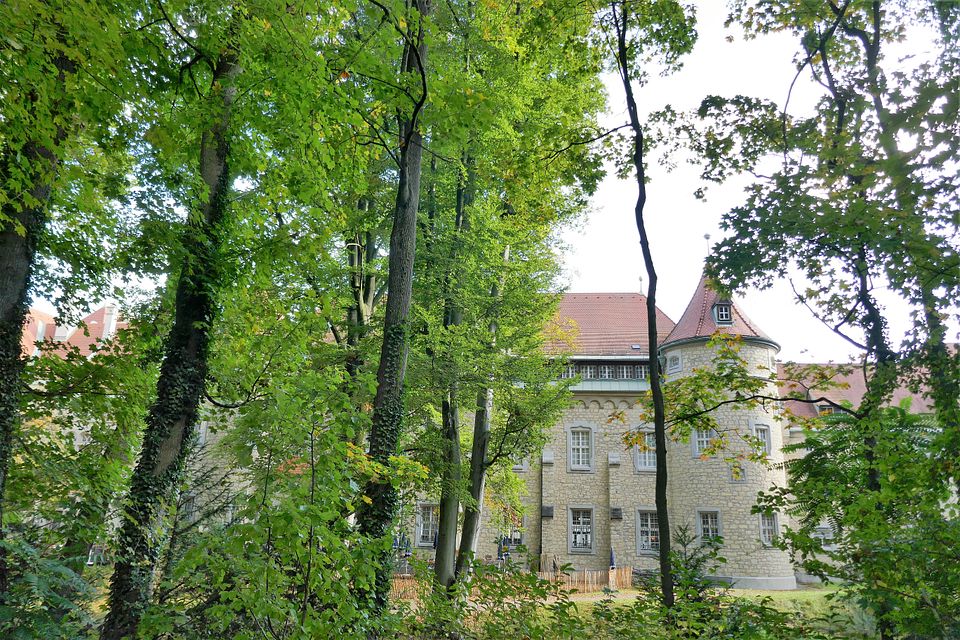
The courtyard shows you how the Thurn and Taxis family remodelled the monastery when they got their hands on it in Baroque and Rokoko times.
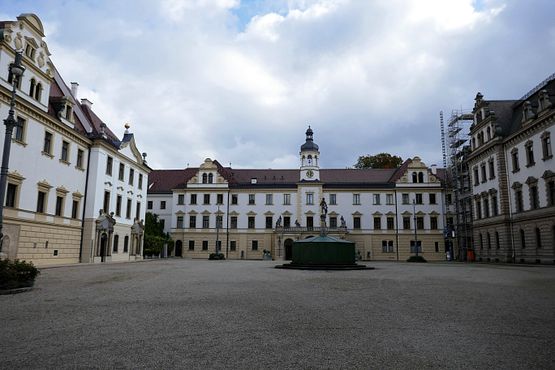
What's truly impressive is the basilica St. Emmeran, though, which like everything else went through a major Baroque overhaul.
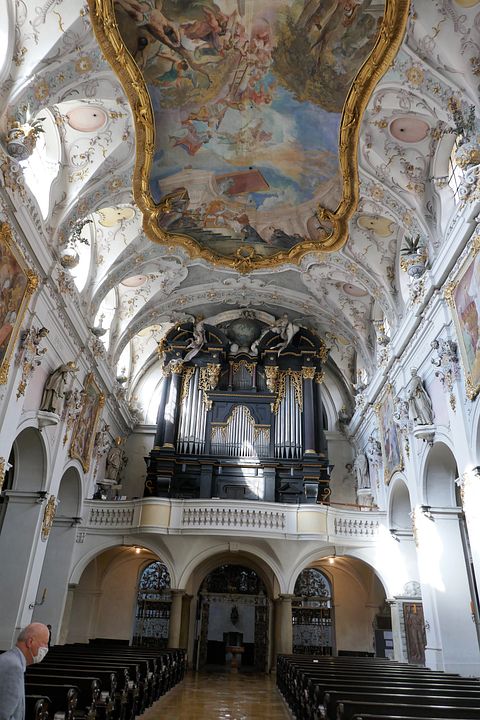
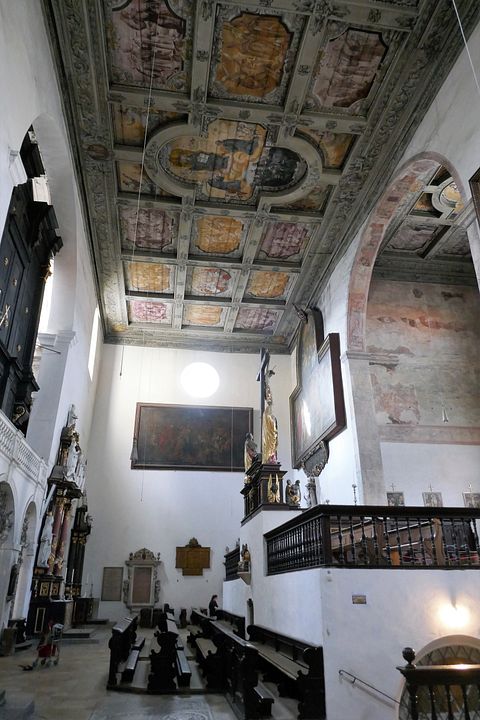
Mind you, in Ratisbon, even small churches are this opulent inside. St. Mangolf's, for example.
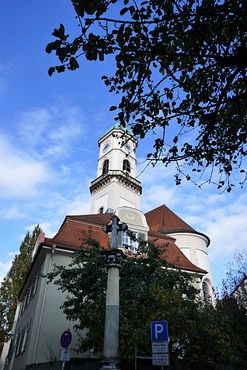
Inside:

One of the more world famous Ratisbon people was Johann Kepler, mathematician and astronomicus, and both the houses where he and his family lived are pointed out. Alas, the museum dedicated to him is closed:
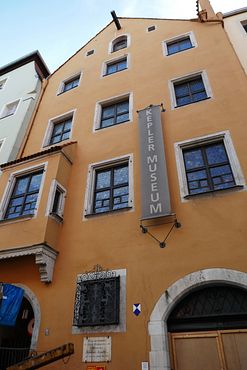
The city hall started out as a normal city hall, but once the Perpetual Diet was established, it was drafted for said diet (which means Ratisbon got a second city hall for the actual Ratisbon city business). This is it:

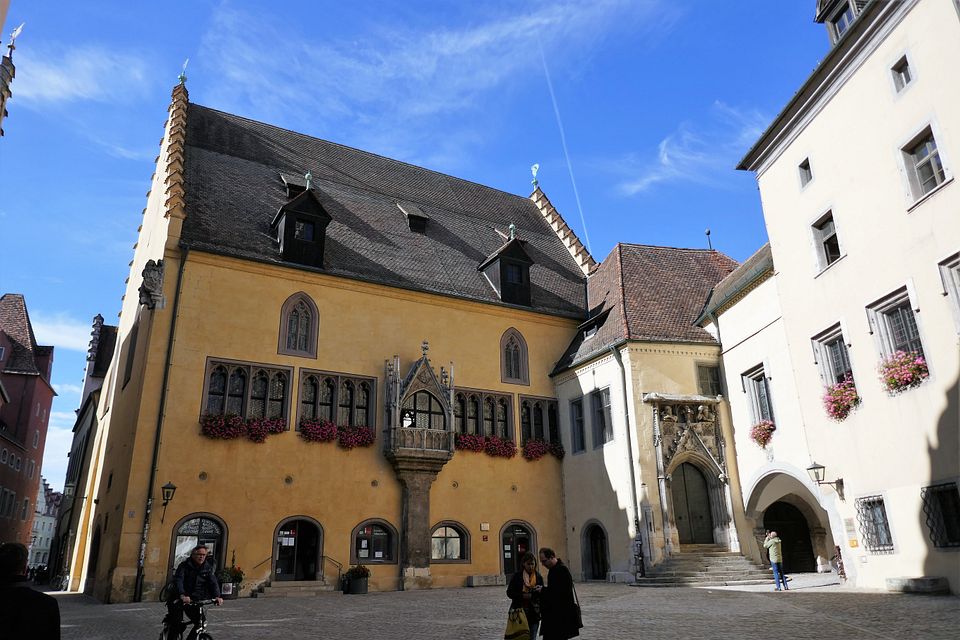
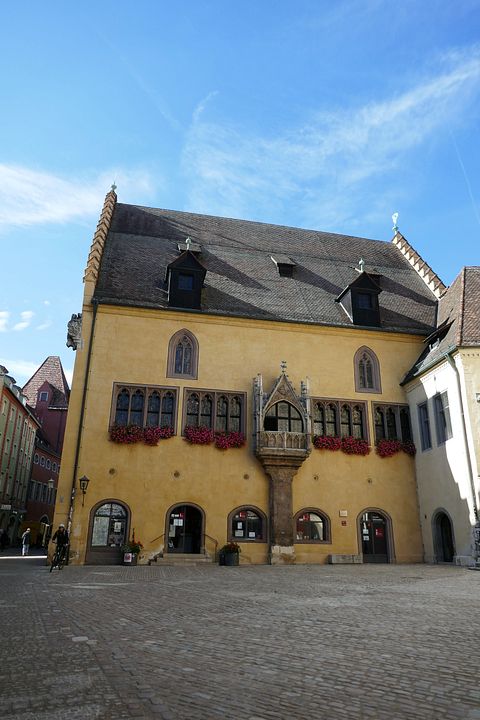
In this room, the princes elector (first seven, then nine; if you want to know why the number got raised, check out the story of Elizabeth Stuart, the Winter Queen), they who had the right to elect an Emperor met:

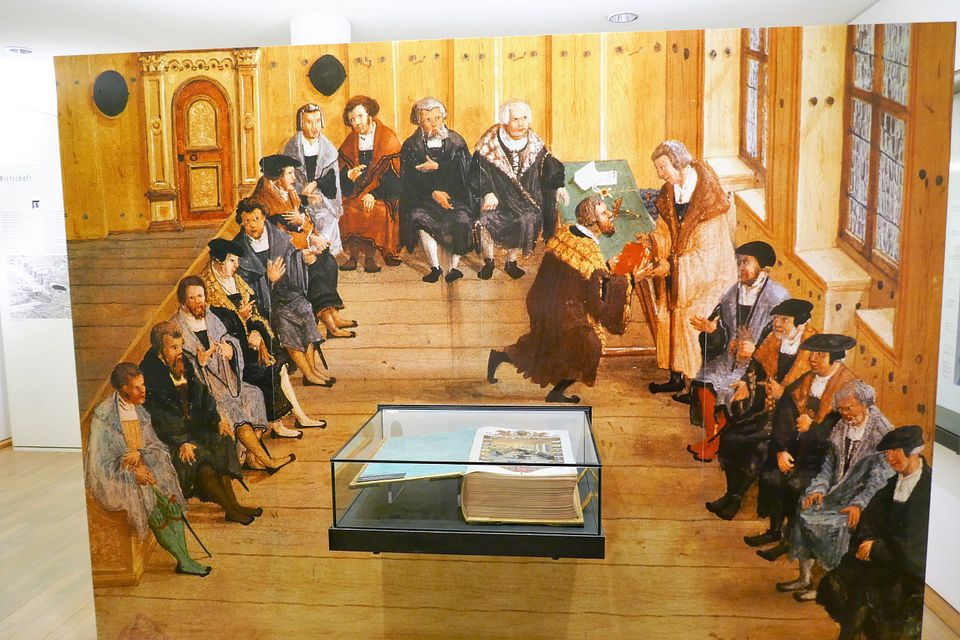

Gotta love the doors:
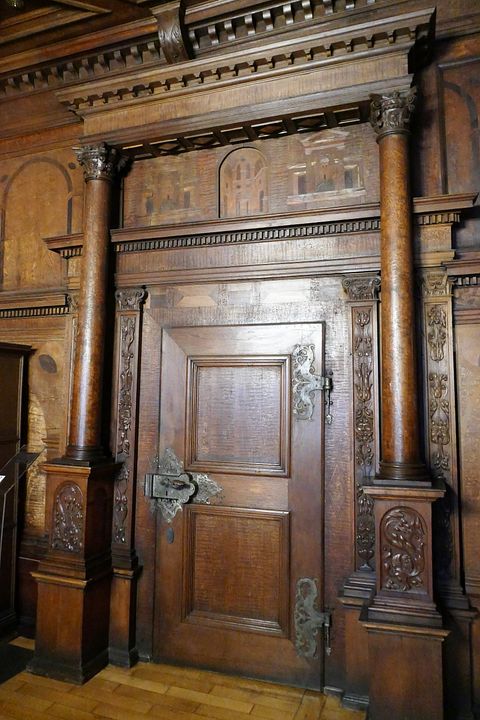
And this is it. The original Reichstag. Where they held the Perpetual Diet. Now, the reason why the first true German parliament for the history books is the one from the 1848 in Frankfurt is that the Ratisbon one wasn't consisting of elected MPs. The people there were: 1) the Princes Electors, some of whom were secular and some were ecclesiastical in nature. The secular ones sat on the left, the ecclesiastical princes on the right side of the Emperor, who at in the middle. (In theory. In practice, ever since the diet became perpetual, representatives of both princes and Emperor sat there.) On the benches at each side of the room, there were, again, ecclesiastical and secular princes represented, who WEREN'T the seven (or nine), to represent the nobility. And on the benches in the middle of the room, the representatives of the Free Cities of the Empire (Freie Reichstädte) were sitting. (For example, Nuremberg or Frankfurt were such Free Cities, meaning they had no liege lord to answer to other than the Emperor himself.) They were appointed, too.
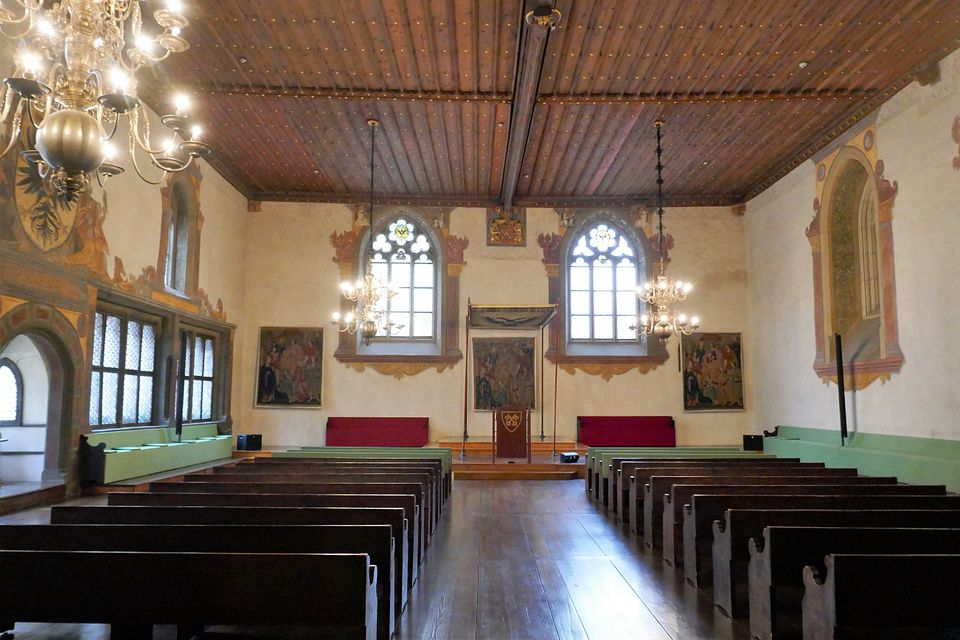
When this still had been a city hall, this had been used as a ball room, btw. Which came in handy, because the place in it where the musicians used to sit was repurposed to host non-German envoys who wanted to attend diet sessions.

Most of decorations are still authentic.
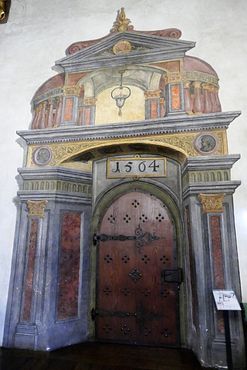
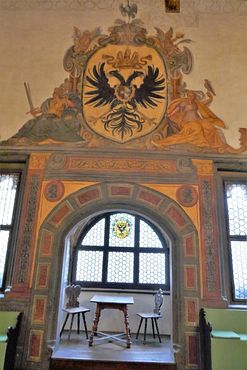
(The double headed eagle, btw, was the official HRE symbol.)
Downstairs, the city hall/Reichstag also had a torture chamber:
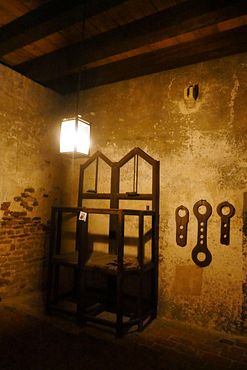
When visiting Ratisbon, Emperor Charles V. had a fling with a local girl, Barbara Blomberg. And Ratisbon never allows you to forget it. Not least because the result of said fling was Don Juan de Austria, victor over the Turks at the battle of Lepanto (aka the one where Miguel de Cervantes lost a limb, if someone is into Don Quixotte). This is the house where Charles stayed and had sex with Barbara, so the inscription tells you:
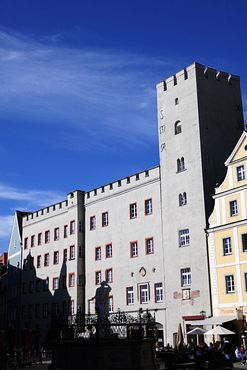
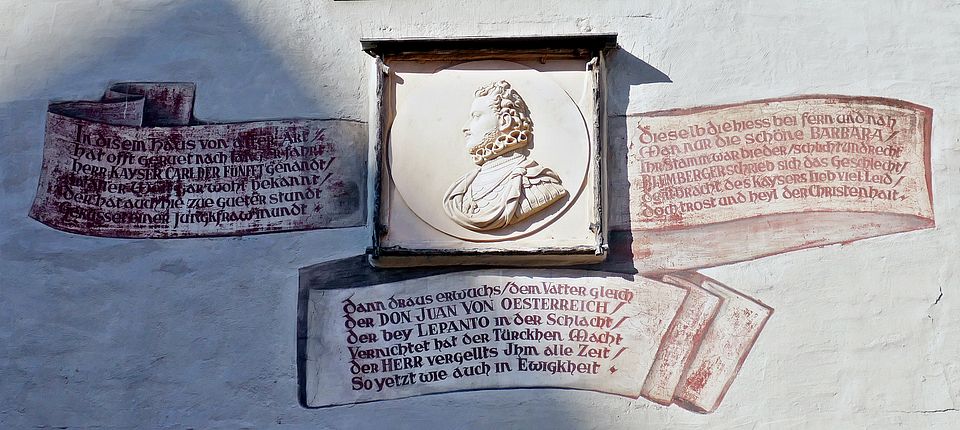
What Barbara's Dad did:
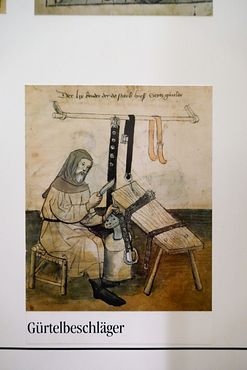
Besides having a statue of his own, Juan also gets a thank you from the Greeks comparing him to Themistocles at Salamis:

The statue, not depicted in this spam, shows Juan with his foot on a Turkish head, which makes it currently somewhat controversial. Back to non-controversial final views of this town mirroring itself in the blue Danube:
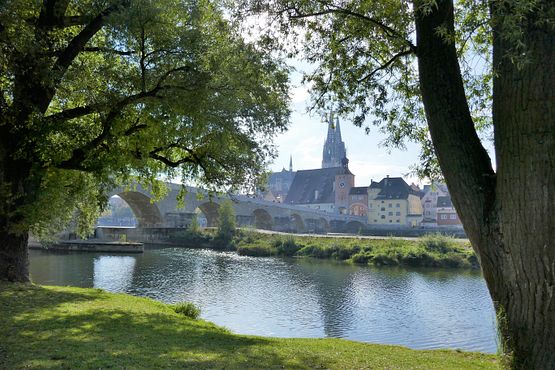
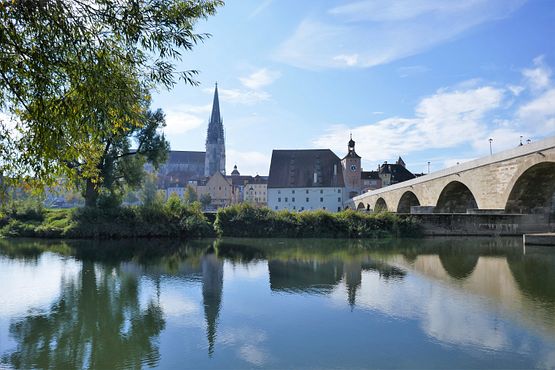
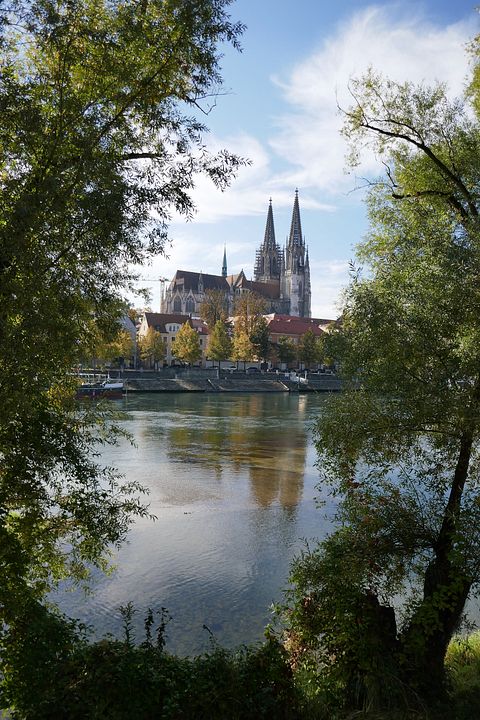

First, here's an overview:

Every now and then, you come across some Roman relics. Like the Porta Praetoriana:


Walking through the streets of Ratisbon is like this:




And the good citizens of Ratisbon for most of its history were very wealthy indeed:

One Ratisbon trademark is the stone bridge, the "Steinerne Brücke" leading into the city. On it, there's a small statue of a man gazing at the city centre, or to be more specific, in the direction of the cathedral. Local legend has it that the master mason of the Cathedral and the one from the bridge had a bet as to which of them would finish first, and the bridge builder lost, which is why he's gazing in frustration.


This statue is a modern copy, though, since the original, well, I found it in a museum, and:

Back to the bridge. This is the old gate to it from the city side:

Have the bridge from both sides:


St. James, aka "The Scots' Church", actually was founded by Irish monks, whom the good citizens from Ratisbon could not tell apart from Scots, hence the name. The portal is one of the few remaining Romanic portals not baroquified later. Ca. from 1080 AD.

Have some details:


One of the reasons why Ratisbon was picked to host the Perpetual Diet was that it had Protestant churches as well as Catholic ones. This is one of them, from which one supposedly has a splendid view over the city. Alas, though, it was closed. I'm taking this personally. Towers are made for me to climb on.

Next to the church, also locked up and only to be glmpsed at from the street, are the tombs of the Protestant envoys buried there. From which you can see that for all their bitching about being bored, their jobs didn't pay badly, for:

It is, of course, located at the Street of Envoys. BTW, it amused me that the most opulent envoy residence was the Saxonian one, because of course it was.

Now, Ratisbon is home to one of one of Germany's more famous noble families, the Princes of Thurn and Taxis. They started out as very successful burgher entrepeneurs in the Renaissance who ran a posting service and rapidly beat the competition (one way or another, she said in a sinister voice) until the Emperor gave them a virtual monopoly on the mail in the HRE and ennobled them, which made the Thurn and Taxis family very rich indeed. They were still loaded when Regensburg became host city of the Perpetual Diet, and the Emperor needed a representative there who had the cash not to take bribes of all the other envoys. Which is how the T & T family and all their money transfered from Frankfurt to Regensburg. They first rented, then bought a local monestary, St. Emmeran, and transformed into their palace. Currently, the senior head of the family is one of the more obnoxious women to grace the Earth; she started out as a punk girl in the 1970s, married the Duke and became ultra Catholic, of the type for whom the phrase "more Catholic than the Pope" is coined. (Especially the current Pope; the former archbishop of Ratisbon, of whom she's a big supporter, is one of the anti-Francis fundamentalist ringleaders.) Also known to defend physical abuse ("kids need discipline"). Back to the buildings. This is the main palace. (Still private property, hence there are only some spots where you're allowed to take pictures.)

The courtyard shows you how the Thurn and Taxis family remodelled the monastery when they got their hands on it in Baroque and Rokoko times.

What's truly impressive is the basilica St. Emmeran, though, which like everything else went through a major Baroque overhaul.


Mind you, in Ratisbon, even small churches are this opulent inside. St. Mangolf's, for example.

Inside:

One of the more world famous Ratisbon people was Johann Kepler, mathematician and astronomicus, and both the houses where he and his family lived are pointed out. Alas, the museum dedicated to him is closed:

The city hall started out as a normal city hall, but once the Perpetual Diet was established, it was drafted for said diet (which means Ratisbon got a second city hall for the actual Ratisbon city business). This is it:



In this room, the princes elector (first seven, then nine; if you want to know why the number got raised, check out the story of Elizabeth Stuart, the Winter Queen), they who had the right to elect an Emperor met:



Gotta love the doors:

And this is it. The original Reichstag. Where they held the Perpetual Diet. Now, the reason why the first true German parliament for the history books is the one from the 1848 in Frankfurt is that the Ratisbon one wasn't consisting of elected MPs. The people there were: 1) the Princes Electors, some of whom were secular and some were ecclesiastical in nature. The secular ones sat on the left, the ecclesiastical princes on the right side of the Emperor, who at in the middle. (In theory. In practice, ever since the diet became perpetual, representatives of both princes and Emperor sat there.) On the benches at each side of the room, there were, again, ecclesiastical and secular princes represented, who WEREN'T the seven (or nine), to represent the nobility. And on the benches in the middle of the room, the representatives of the Free Cities of the Empire (Freie Reichstädte) were sitting. (For example, Nuremberg or Frankfurt were such Free Cities, meaning they had no liege lord to answer to other than the Emperor himself.) They were appointed, too.

When this still had been a city hall, this had been used as a ball room, btw. Which came in handy, because the place in it where the musicians used to sit was repurposed to host non-German envoys who wanted to attend diet sessions.

Most of decorations are still authentic.


(The double headed eagle, btw, was the official HRE symbol.)
Downstairs, the city hall/Reichstag also had a torture chamber:

When visiting Ratisbon, Emperor Charles V. had a fling with a local girl, Barbara Blomberg. And Ratisbon never allows you to forget it. Not least because the result of said fling was Don Juan de Austria, victor over the Turks at the battle of Lepanto (aka the one where Miguel de Cervantes lost a limb, if someone is into Don Quixotte). This is the house where Charles stayed and had sex with Barbara, so the inscription tells you:


What Barbara's Dad did:

Besides having a statue of his own, Juan also gets a thank you from the Greeks comparing him to Themistocles at Salamis:

The statue, not depicted in this spam, shows Juan with his foot on a Turkish head, which makes it currently somewhat controversial. Back to non-controversial final views of this town mirroring itself in the blue Danube:




no subject
Date: 2021-10-17 06:02 pm (UTC)no subject
Date: 2021-10-18 01:22 am (UTC)Even the Wikipedia page is called Perpetual Diet of Regensburg. Ah, and I see "Ratisbon" makes its appearance on that page in a parenthetical: "From 1663 until the 1684 Truce of Ratisbon (a former name of Regensburg in English)..." Aha! I'm not crazy. :D
Lovely pics, Selena, more commentary when it's not my bedtime!
no subject
Date: 2021-10-17 07:49 pm (UTC)no subject
Date: 2021-10-18 07:20 am (UTC)no subject
Date: 2021-10-18 04:28 am (UTC)Ha, I like the statue looking at the cathedral. At least he's got a good view?
Man, those church CEILINGS. I am a sucker for those ceilings :D
And those pictures with the Danube are so beautiful <3
And inquiring minds want to know: did you eat chocolate, and was it good? :D
no subject
Date: 2021-10-18 07:20 am (UTC)no subject
Date: 2021-10-18 06:15 am (UTC)no subject
Date: 2021-10-18 07:17 am (UTC)no subject
Date: 2021-10-18 09:25 am (UTC)no subject
Date: 2021-10-18 10:25 am (UTC)no subject
Date: 2021-10-18 11:39 am (UTC)with the need for a kind of parliament to meet so lots of envoys can bitch about being bored to be posted here and write reports about it.
Hahaha, a long-suffering Whitworth says hi!
St. James, aka "The Scots' Church", actually was founded by Irish monks, whom the good citizens from Ratisbon could not tell apart from Scots, hence the name.
So, interesting linguistic tidbit: "Scotia" was originally a name for Ireland, and "Scot(t)i" a name for Gaels in general. Only when the Scot(t)i from Scotia started settling the northern part of the larger island next to them did that region start being called Scotia too. For a while, it was used of both places. Wikipedia tells me it was in the 11th century, a few centuries after the migration, that it really started to only mean what we think of as Scotland, and only in the 12th century that locals started calling themselves that. So your 11th century church is just within the period in which I'd expect Irish monks to be being called Scots without it being a confusion.
Alas, though, it was closed. I'm taking this personally. Towers are made for me to climb on.
Argh! I also climb whatever towers I can find, so I feel for you here.
BTW, it amused me that the most opulent envoy residence was the Saxonian one, because of course it was.
Lol, of course!
Alas, the museum dedicated to him is closed:
Argh again!
Thank you for sharing!
Have you read Stollberg-Rilinger's The Emperor's Old Clothes? It's on my list, since the blurb sounds interesting:
For many years, scholars struggled to write the history of the constitution and political structure of the Holy Roman Empire. This book argues that this was because the political and social order could not be understood without considering the rituals and symbols that held the Empire together. What determined the rules (and whether they were followed) depended on complex symbolic-ritual actions. By examining key moments in the political history of the Empire, the author shows that it was a vocabulary of symbols, not the actual written laws, that formed a political language indispensable in maintaining the common order.
no subject
Date: 2021-10-18 03:45 pm (UTC)Whitworth, I'm sure you were bored, but: wasn't it pretty?
So, interesting linguistic tidbit: "Scotia" was originally a name for Ireland, and "Scot(t)i" a name for Gaels in general.
That's fascinating. Good for you, ancient Regensburgers, current day Regensburgers are wronging you when stating in their brochures you made a mistake with the naming!
S-R: no, not yet. So much else to read!
ETA: Of course, if, in theory, someone had put Fritz on trial, then, in theory, I saw both the place where he'd have stood trial, and where a visiting Voltaire would have stood within the room. ;)
no subject
Date: 2021-10-19 12:00 pm (UTC)Whitworth: Yes, ma'am, but also very expensive! All that ceremonial means *I'm* expected to engage in conspicuous consumption. And unlike your normal diplomat, I'm not independently wealthy, and my salary is always in arrears. Woe! Woe unto me!
That's fascinating. Good for you, ancient Regensburgers, current day Regensburgers are wronging you when stating in their brochures you made a mistake with the naming!
Ancient Regensburgers: We're the ones who knew medieval Latin!
One of my casual but long-term hobbies is looking up the etymologies of toponyms and ethnonyms. Which is why I read the Kindle sample of the seven sackings of Rome book at your recommendation (it's still on my wishlist), I appeared in your blog correcting the author on which of the Gael/Gaul/Galatia words are related and which are not. :)
S-R: no, not yet. So much else to read!
I knooow! My reading list is largely your fault, although I admit I brought the Great Northern War on myself. ;)
ETA: Of course, if, in theory, someone had put Fritz on trial, then, in theory, I saw both the place where he'd have stood trial, and where a visiting Voltaire would have stood within the room. ;)
Sounds like you are eminently qualified to write this fic, which I would read and leave detailed and enthusiastic comments on!
no subject
Date: 2021-10-18 08:44 pm (UTC)no subject
Date: 2021-10-19 06:56 am (UTC)